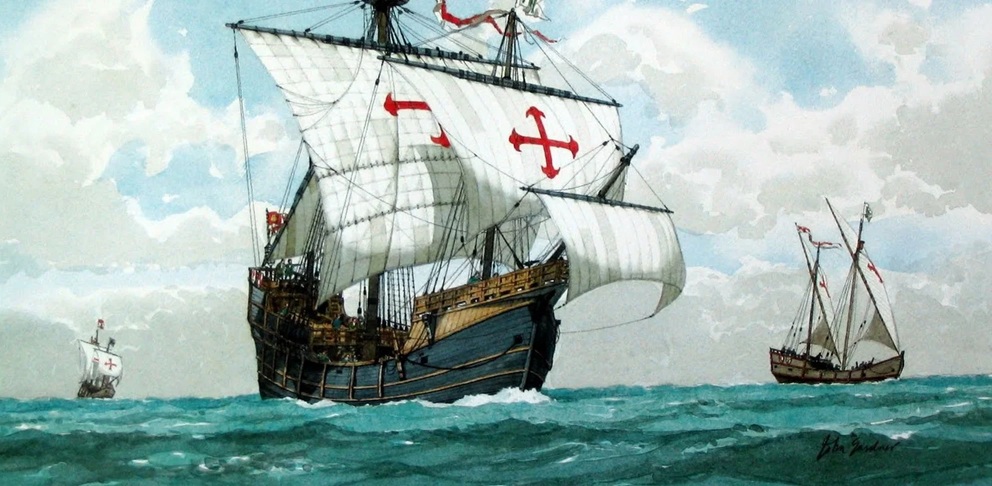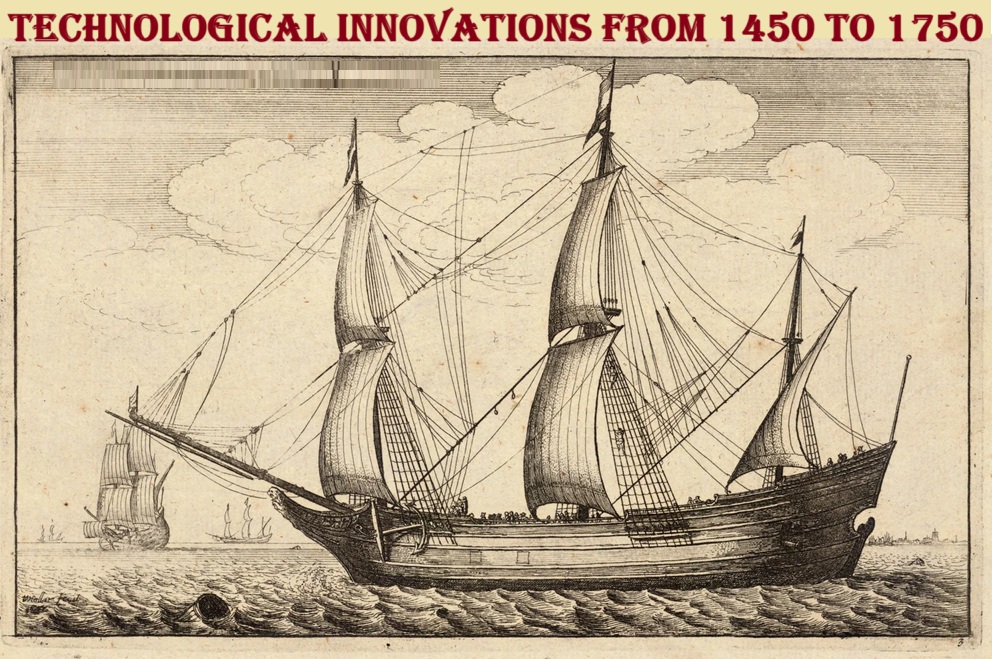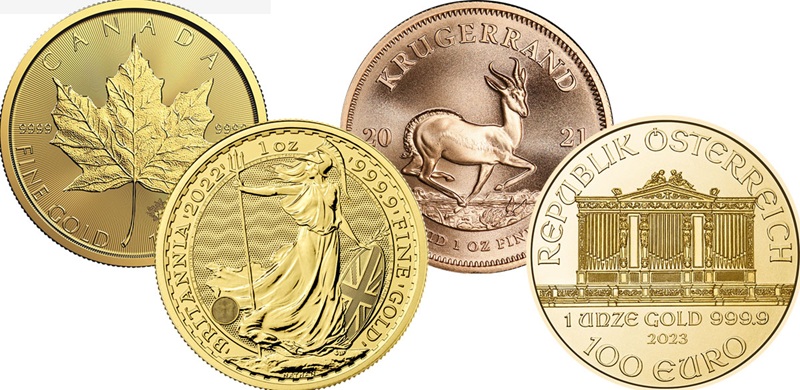Introduction: technological innovations from 1450 to 1750
Between 1450 and 1750, the area underwent one of the most transformative technological eras in human history. This period — frequently known as the Age of Exploration, Scientific Revolution, or Early Modern Era — discovered improvements that bridged the medieval international and the dawn of industrialization.
From printing presses and telescopes to gunpowder weapons and worldwide navigation, the ones upgrades reshaped societies, economies, and records systems all the time. Let’s find out how technological enhancements in some unspecified time in the destiny of this era redefined worldwide electricity, verbal exchange, and human functionality.
Table of Key Technological Innovations (1450–1750)
| Innovation | Year/Period | Inventor/Origin | Impact |
|---|---|---|---|
| Printing Press | C. 1450 | Johannes Gutenberg, Germany | Revolutionized communication, literacy, and knowledge distribution |
| Gunpowder Weapons | 15th–17th centuries | China (adopted by Europe) | Changed warfare and national power dynamics |
| Caravel Ship | 15th century | Portugal | Enabled long-distance sea exploration |
| Astrolabe & Sextant | 15th–16th centuries | Islamic World / Europe | Improved navigation and mapping accuracy |
| Telescope | 1608 | Hans Lippershey & Galileo Galilei | Advanced astronomy and scientific observation |
| Microscope | C. 1590 | Zacharias Janssen (Netherlands) | Opened new worlds in biology and medicine |
| Steam Pump (Newcomen Engine precursor) | 17th century | Thomas Savery | Early step toward the Industrial Revolution |
| Barometer | 1643 | Evangelista Torricelli | Revolutionized meteorology and physics |
| Pendulum Clock | 1656 | Christiaan Huygens | Greatly improved timekeeping accuracy |
| Spinning Wheel Improvements | 16th century | Europe | Increased textile production efficiency |
| Scientific Method | 17th century | Francis Bacon, Galileo, Newton | Foundation of modern science |
The Dawn of a New Era (1450–1500)
Gutenberg’s Printing Press: The Birth of Mass Communication
One of the maximum transformative enhancements of the fifteenth century modified into Johannes Gutenberg’s printing press (around 1450). This innovation used movable metallic type to print books extra efficiently and efficiently than ever earlier than.
Before the printing press, books had been handwritten — gradual, pricey, and available first-rate to the elite. Gutenberg’s invention added on:
- Mass production of books
- Rapid spread of facts
- Increased literacy
- Scientific and spiritual reform moves
The press finished a critical function in the Protestant Reformation, as Martin Luther’s ninety five Theses spread fast all through Europe, despite the Catholic Church’s authority.
It moreover fueled the Renaissance, permitting university students to proportion medical and modern discoveries extensively. technological innovations from 1450 to 1750.
The Caravel and the Age of Exploration
In the 15th century, Portuguese and Spanish navigators started out exploring uncharted oceans and the usage of a current-day form of supply — the caravel.
The caravels have become mild, speedy, and mainly maneuverable, able to extend voyages with stepped forward wind resistance. This innovation allowed explorers together with:
- Christopher Columbus to acquire the Americas (1492)
- Vasco da Gama to discover a sea course to India (1498)
- Ferdinand Magellan’s day ride to circumnavigate the globe (1519–1522)
The mixture of superior ships, maps, and navigational devices opened exchange routes, enabled colonial empires, and connected continents for the primary time in records. technological innovations from 1450 to 1750.
Navigational and Maritime Breakthroughs (1500–1600)

Compass, Astrolabe, and Sextant: Guiding the Seas
Accurate navigation changed into crucial in the end of this era of exploration. The magnetic compass, astrolabe, and later the sextant were essential tools for sailors.
- The astrolabe, first of all superior with the beneficial aid of Islamic astronomers, helped sailors degree the mindset of celestial bodies to determine variety.
- The sextant (advanced within the 16th century) superior at the astrolabe, providing extra precision.
- The magnetic compass, advanced with the aid of Chinese and European inventors, guided explorers at some point of oceans nicely.
These gadgets revolutionized tour and alternate, laying the muse for the globalization of alternate and way of life. technological innovations from 1450 to 1750.
Advances in Cartography and Mapmaking
Explorers’ voyages required correct maps, which spurred advances in cartography.
During this period, mapmakers like Gerardus Mercator superior the Mercator projection (1569) — a progressive map format that allowed sailors to plot right-now-line guides in some unspecified time in the future of oceans. technological innovations from 1450 to 1750.
This innovation emerge as vital for:
- Global exploration
- Military expeditions
- Trade path boom
Cartography has become a scientific artwork, merging arithmetic, geography, and exploration statistics.
Scientific Revolution and Instrumentation (1600–1700)
The Telescope: Expanding the Universe
In 1608, Hans Lippershey invented the number one telescope, and Galileo Galilei quickly advanced it dramatically. Galileo’s telescopic observations positioned out that:
- The Earth orbits the Sun (supporting Copernican principle)
- The Moon has mountains and craters
- Jupiter has moons
These discoveries shattered extended-held beliefs and marked the start of contemporary astronomy.
The telescope has emerged as a picture of human interest and the electricity of declaration in technology.
The Microscope: Discovering the Invisible World
Around the same time, Zacharias Janssen and later Anton van Leeuwenhoek perfected the microscope. This invention decided the existence of:
- Microorganisms
- Blood cells
- Tissue structures
For the primary time, humans need to discover the microscopic international, important to advances in remedy, biology, and hygiene.
The microscope moreover laid the muse for germ ideas centuries later.
The Barometer and Thermometer: Measuring Nature
The 17th century delivered new precision gadgets:
- Evangelista Torricelli’s barometer (1643) measured air strain, launching the observation of meteorology.
- Galileo and Fahrenheit’s thermometers enabled temperature length, enhancing chemistry and physics studies.
These tools transformed generation right into an area of quantitative assertion, organising a basis for experimental check. technological innovations from 1450 to 1750.
Industrial Foundations (1650–1750)
The Pendulum Clock: Perfecting Timekeeping
In 1656, Christiaan Huygens invented the pendulum clock, revolutionizing the time period.
Earlier clocks were erroneous, however Huygens’ design completed superb precision — vital for navigation, astronomy, and business art work.
Accurate timekeeping helped:
- Coordinate alternate and delivery schedules
- Improve astronomical observations
- Encourage mechanization and not unusual regular overall performance
This innovation foreshadowed the Industrial Revolution’s cognizance on precision engineering. technological innovations from 1450 to 1750.
The Steam Pump and Early Steam Technology
Before the Industrial Revolution, inventors sought techniques to harness steam strength.
In 1698, Thomas Savery developed a steam pump to do away with water from mines — a vital innovation for mining and agency.
This early generation laid the inspiration for Thomas Newcomen’s steam engine (1712), which turned out to be the prototype for current engines.
Steam generation has emerged as the important aspect turning factor that converted agriculture, transportation, and production all the time.
Advancements in Textile Production
The fabric corporation became essential to early organization improvement. During the sixteenth and seventeenth centuries, upgrades collectively with:
- Improved spinning wheels
- Mechanical looms
- New dyeing techniques
…Improved material production and decreased tough artwork fees.
These advances helped Europe’s economic device flourish and organized the vicinity for the Industrial Revolution of the 18th century. technological innovations from 1450 to 1750.
The Scientific Method and Intellectual Revolution
eleven. The Rise of Scientific Thinking
One of the most big “technological” enhancements wasn’t a tool — it has come to be a way of thinking.
The Scientific Method, promoted thru Francis 1st Sir Francis 1st Baron Beaverbrook, Galileo Galilei, and later Isaac Newton, installation a modern approach to expertise:
- Observation → Hypothesis → Experiment → Analysis → Conclusion
This technique changed superstition and authority with cause, proof, and experimentation.
It has turned out to be the muse for each contemporary medical scenario.
Newton’s Discoveries and Mathematical Tools
Sir Isaac Newton’s enhancements from 1660–1700 were modern.
His discoveries protected:
- Laws of motion and gravity
- Calculus (with Leibniz)
- Reflecting telescope layout
These enhancements unified physics and astronomy, helping human beings apprehend the acquainted jail guidelines of nature.
Impact on Global Society
Communication and Education
The printing press democratized reading, permitting thoughts to unfold quicker than ever. Universities, libraries, and academies flourished all through Europe.
For the number one time, information has grown to be reachable to common residents, now not sincerely university college college students or clergy. technological innovations from 1450 to 1750.
Exploration and Empire Building
Technological enhancements in ships and navigation have become small European kingdoms into global empires.
By 1750, European explorers had associated the Americas, Africa, and Asia, setting the amount for international trade, cultural exchange, and regrettably, colonization.
Warfare and Political Power
Gunpowder era converted warfare.
Cannons, muskets, and fortifications reshaped navy technique and political electricity, leading to the upward push of geographical areas and centralized monarchies.
Timeline of Key Technological Innovations (1450–1750)
| Century | Key Inventions | Major Figures |
|---|---|---|
| 15th Century | Printing Press, Caravel, Compass Improvements | Gutenberg, Henry the Navigator |
| 16th Century | Mapmaking, Sextant, Spinning Wheel Upgrades | Mercator, Vasco da Gama |
| 17th Century | Telescope, Microscope, Barometer, Steam Pump | Galileo, Torricelli, Huygens, Savery |
| 18th Century (early) | Steam Engine, Industrial Tools | Newcomen, Watt (later) |
Conclusion: A World Transformed
Between 1450 and 1750, humanity took notable steps ahead. This era’s technological improvements now not excellent superior technological know-how and agency enterprise, but furthermore reshaped human civilization.
The printing press spread facts, the caravel and compass related continents, and the scientific approach transformed how we count on. These dispositions laid the muse for the Industrial Revolution and the contemporary world.
The spirit of hobby, invention, and discovery born in this era continues to encourage innovation these days — reminding us that each notable transformation begins off with an unmarried concept. technological innovations from 1450 to 1750.








